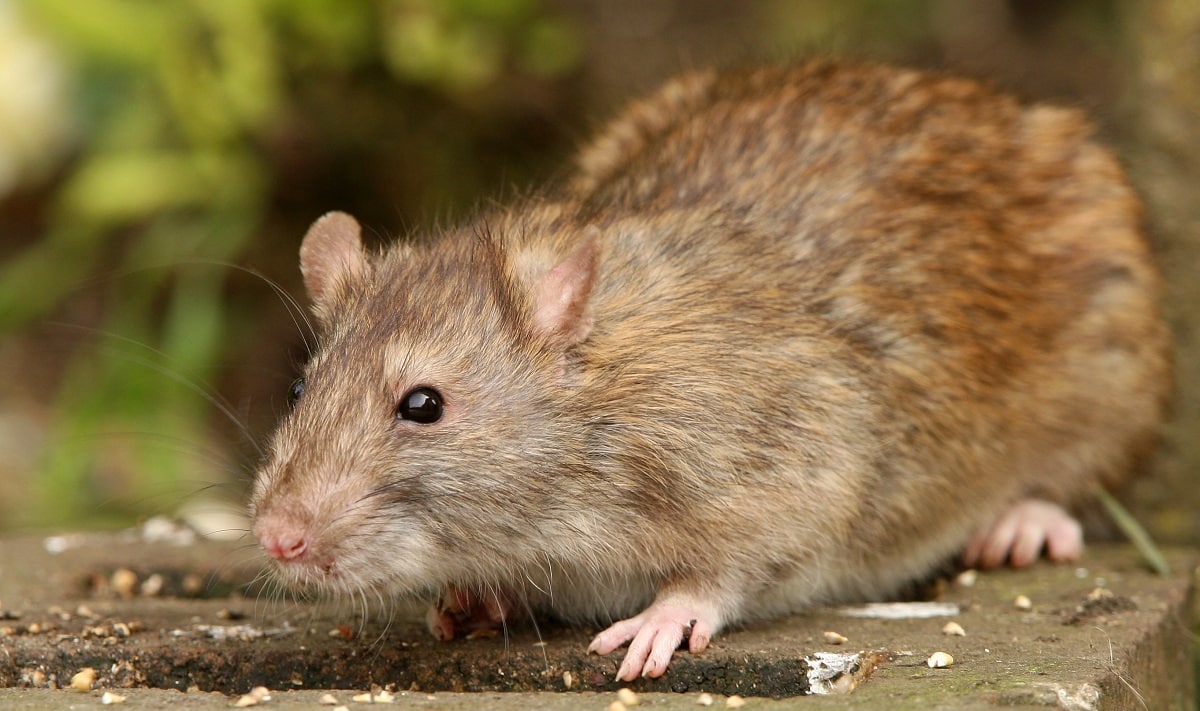
You’ll find plenty of rat repellents on the market that claim to keep these rodents away from your home and yard. Unfortunately, there’s little evidence that any of them work. Some can help when applied in large amounts and everywhere that rats could travel. The cost of many commercial repellent products makes that impractical for the average homeowner.
There are methods that do control rats and come with an affordable monthly cost. Learn what to try instead of rat repellents and some reasons why the most common products tend to fail.
Rat Repellent Sprays and Liquids
Rats have an incredibly sensitive sense of smell. Rats have over 1200 olfactory receptor genes compared to the 811 olfactory receptor genes dogs have. They use their sense of smell to find food, find their way back to nests, and detect when temperatures are about to change.
Scent-based repellents are designed to discourage rats from entering or staying in certain areas by emitting strong and unpleasant odors that rats find repulsive.
These repellents often contain natural ingredients such as predator urine, peppermint oil, garlic oil, or ammonia. These substances produce a strong scent that rats associate with danger or a threat to their survival. Rats have a highly developed sense of smell and are sensitive to certain odors that signal danger or the presence of predators.
One type of spray that may help is a bitter-tasting rat gnawing guard that discourages them from biting exposed wiring under your house or in your attic. However, it’s better to control the rats with more wide-reaching methods rather than hoping the bite repellent is enough.
Rat Repellent Pellets
Not to be confused with bait pellets, rat-repellent pellets function similarly to sprays by featuring a mix of scents that supposedly discourage rats. Unfortunately, most people who have tried rat-repellent granules have found the pellets scattered around rat nesting areas without any avoidance behavior at all. The rats simply don’t find them bothersome enough to avoid.
The wood or paper pulp used as the base of these pellets is all too enticing to the rats when they need a good material for nesting. Even mixing in mothballs or other strongly scented additions won’t increase the usefulness of this kind of rat repellent.
Natural Rat Repellents
Many sprays and pellets used as rat repellents boast their natural ingredients. Essential oils like cedar, eucalyptus, and black pepper oil are all popular as homemade or commercial deterrents. Yet even the most irritating among them still do little to stop rats. It’s simply not cost-efficient to spread a concentrated form of this kind of essential oil around your property in volumes great enough to bother the rats.
Other ideas like planting marigolds, mint, or dill won’t stop rats from visiting your home and yard either. Crushed pepper is unlikely to even get noticed by them, no matter how thick you apply it around the exterior of your home or inside your crawlspace.
Ultrasonic Rat Repellents
Ultrasonic rat and rodent repellents claim to produce a high-pitched sound you’ll barely hear. They can plug into existing outlets or run off battery power. While they may produce the sound they claim to make, there’s little evidence it bothers rats and other rodents. Many people set up cameras around their ultrasonic rat repellents to find that the animals are passing by without any noticeable reaction to the sound.
Even if you could scare rats away with something as simple as an annoying noise, you’d still have to place so many emitters around your home and property that it would be hard to keep up with changing that many batteries.
What Kind of Rat Control Is Most Effective?
You need a comprehensive and integrative approach that focuses on all the things that attract rats. Removing shelter in the form of fallen logs or brush, controlling accessible sources of food like unsecured trash cans, and cutting down on accessible water from dripping hose bibs all go a long way in discouraging rat visits. You need to go further than that if you already have a rodent problem.
Exclusion installations are the key to keeping them out of the house and any outbuildings on the property. Protecting your home with mesh or hardware cloth can only help so much if you’re still letting rats live in sheds, barns, or garage areas.
You’ll need ongoing maintenance to ensure any rats that do drop by don’t stick around long enough to start a family. Outdoor bait stations are generally the best way to accomplish that with minimal effort.
There’s no need to put up with the disease risks and property damage that come along with rats and other rodents. It’s just a matter of using the right commercial control methods rather than spending weeks testing your own DIY and natural rat repellents.
Go straight to more effective techniques by hiring Critter Control to assess what’s bringing the rats to your property. Once we set up an exclusion system for the whole home and nearby structures, you’ll see a drop in rat-related damage right away.
Get them out.
Keep them out.®
Experiencing a wildlife or pest issue? We can help! Complete this form and your local Critter Control® office will contact you to assist.
- Baby Rats
- Do Rats Hibernate in Winter?
- Dead Rat
- Rat Droppings
- Diseases from Rats
- Rat Bites
- Rat Life Cycle
- Identify Rat Noises Inside Your Home
- Rat Tracks
- Rat Traps & Baits
- Rat Tunnels in Attic
- Rats in Cars
- Rats in Crawl Space
- Rats in Homes
- Rats in Walls
- Types of Rats
- What Can Rats Chew Through
- What Do Rats Eat?
- What Does a Rat Look Like?
- Where Do Rats Nest?